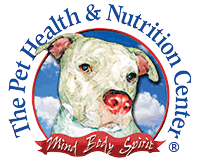High Pressure Processing (HPP): is it Safe for Pet Dog and Cat Food?
High Pressure Processing (HPP) is a process in which food is subjected to high pressure (up to 100,000psi). This pressure is applied uniformly around and throughout the food product so as to maintain the characteristics of the fresh food. HPP is used to destroy pathogenic organisms and it is believed that this process does not diminish product quality, such as flavor, texture and color, as does heat processing.
HPP is used by industry to extend shelf life. Its use is being spurred on by an environment of fear that is pervasive within our society, but at what cost and with what risks? Many of us are aware of the harm that pasteurization does to raw milk. Yes, it kills potentially harmful bacteria, but safe handling, sanitary conditions and stringent safety measures would prevent the presence of this bacteria in the first place. However, the effects of pasteurization on milk are even more insidious. The heat used during this process does kill bacteria and extend shelf life, but it also destroys heat sensitive nutrients like vitamin C and beneficial microorganisms, changes the structural form of lactose, makes calcium less absorbable, destroys iodine content and destroys other vital, health giving qualities that are found in raw milk. And this next part gives a clue to where I am going with HPP. When the lactic acid bacilli, found in raw milk, are killed by pasteurization, the milk does not sour, which is very widely used for its health benefits, but instead quickly decays and undesirable microorganisms multiply very quickly. So the process of pasteurization not only destroys vital nutrients, but can make milk more dangerous if it is not stored properly or gets re-contaminated by pathogenic bacteria at some point during the manufacturing process.
While I acknowledge that HPP destroys pathogenic bacteria, a concern is the fact that the beneficial bacteria, enzymes and other functional proteins are known to be destroyed during this process. But what effects don’t we know about at this time? Well, one thing we do know is that the beneficial bacteria found on raw food products, as well as those found in your gastrointestinal tract, are responsible for keeping colonies of pathogenic bacteria from multiplying quickly through competitive inhibition (competing for growth). This leads to my primary concern, which is, once these friendly bacteria are destroyed along with the unfriendly bacteria, there is nothing to keep the pathogenic bacteria from growing out-of-control if the food product is re-contaminated during manufacturing. This is exactly what has happened with several popular brands of kibble dog food recently, as well as over the last several decades, and this re-contamination with pathogenic bacteria, like Salmonella, after the cooking process, without the presence of friendly bacteria, can make people and animals sick. I fear raw pet food manufacturers, like Nature’s Variety and Stella and Chewy’s, are opening up a Pandora’s Box by using HPP, I hope others don’t follow suit.
I believe that HPP appears to be safe, according to the information we have available today. Do I support its use on raw pet food? No, for the reasons listed above, and I will tell you a quick story that applies to the use of HPP and supports my position. We always give our cats a little treat before bed, which consists of an ounce or so of their favorite raw cat food. Sometimes they would not finish it all and I would find them munching on it the next morning after it had sat out at room temperature for eight or nine hours or so. I would always rush to try to get the left-over before they ate it because I was concerned with it having sat out unrefrigerated for so long, until I realized that they never got sick. My nineteen year-old cat Lacy would do this every morning as she did for years, and never got sick a day in her life! Why do I tell you this story? Because it was the presence of the beneficial bacteria that existed on this unprocessed raw food that kept any pathogenic bacteria at bay by preventing their population from multiplying. Would Lacy have become ill if I fed her a raw food treated with HPP? Yes, I believe she would have, because all the friendly bacteria would have been destroyed during processing and pathogenic bacteria, prevalent in our environment, could have multiplied unimpeded and contaminated her food.
Whenever people come to me concerned with the use of raw food, I remind them that it is kibble and canned pet food that has sickened or killed our dogs and cats over the last few decades, not raw food. I whole heartedly support the use of unprocessed raw food for three reasons: raw food contains whole-food nutrition in a natural form that an animal’s body can easily digest, absorb, metabolize and eliminate what isn’t used and it contains beneficial bacteria, that are not only healthy, but control the growth of pathogenic bacteria that could make our animals sick. In addition, and this is very important, cats and dogs have a gastrointestinal tract that has evolved to deal with the presence of bacteria that can be found in raw food, much more so than the human GI tract. HPP in effect turns raw food into a processed food, and there is potentially trouble down the road for raw pet food manufacturers that choose to proudly market this process, like the two mentioned above, or those that succumb to fear and ignorance.
References
1). From Armchair Science, London (April 1938); Raw Milk Vs. Pasteurized Milk; http://www.realmilk.com/rawvpasteur.html; 11/06/2010
2). High Pressure Dynamics, Inc.; http://www.highpressuredynamics.com/; What is High Pressure Pasteurization?; 7/30/2010
3). Ohio State University Extension; http://ohioline.osu.edu/fse-fact/0001.html; High Pressure Processing; 7/30/2010

